All images by Lauren Teo for RICE Media unless otherwise stated
Animal chiropractor, Dr Valerie Teo’s thick leather boots echo off the grey concrete floor at the Riding Disability Association (RDA). Between her stomps are grunts and groans from stabled horses. They seem to greet her as she walks past.
Dr Teo works as a chiropractor in Singapore, starting first as a chiropractor for humans in 2014 before diving into treating animals in 2016. Now, she is the Principal Chiropractor of Animal Pal Chiropractic, a centre dedicated to treating animals, usually small pets.
But today, Dr Teo is away from her clinic and in the middle of a large stable stowed away in a private property estate in the middle of Caldecott. Outside her clinic’s operating hours, she treats horses at the Riding Disability Association twice a month on a pro-bono basis.
A chiropractic treatment session with large animals, mainly horses, costs somewhere between $150 to $190. The same session for small animals—like cats and dogs—costs between $85 to $120.
Dogs, cats, horses, and even elephants have been treated by the hands of Dr Teo. According to her, an animal chiropractor looks out for animals’ spinal well-being. Animal chiropractic treatment, as explained by Dr Teo, is a form of preventive care.
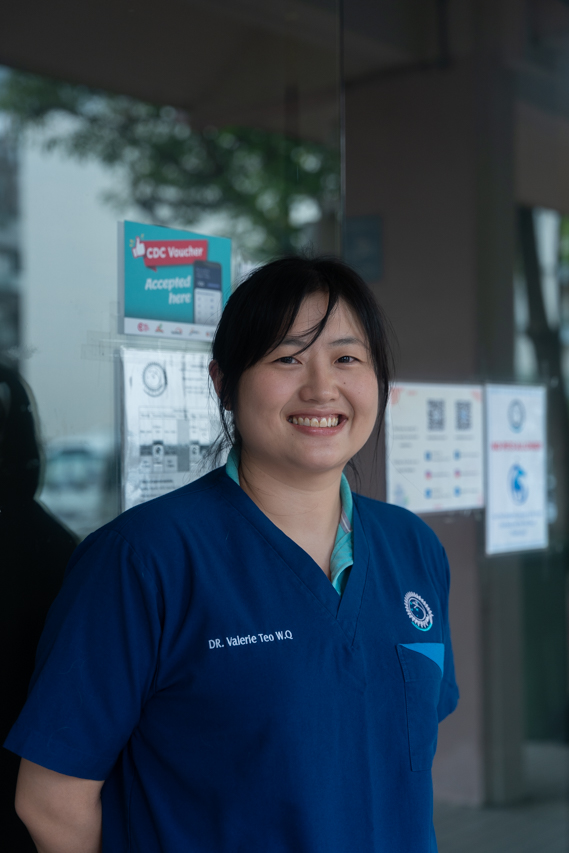
“Basically, it’s what we do as a chiropractor. We are like police officers checking the spine. We work hand in hand with rehab and posture correction. It’s a holistic process. That’s why some patients complain that chiropractic treatment doesn’t work. It’s part of a holistic plan, so other lifestyle factors can intervene with the treatment.”
Despite doubts about the science behind chiropractic treatment, some believe that the bone-crunching, socket-popping methods work miracles on people and animals. Perhaps, it’s why animal chiropractic treatment videos are racking up online popularity.
Animal chiropractic videos, as with other internet trends that have blossomed into the online stratosphere, receive as much flak as they do adoration. After all, TikTok videos of pet owners performing ‘chiropractic’ treatment on their pets opens the doors to irresponsible pet ownership for the quick dopamine hit of views.
The Controversy of the Animal Chiropractor
This issue has crawled its way onto Singapore’s shores and into the halls of Parliament. MP Leon Perera, in a Parliamentary sitting on 14 January 2019, asked the Minister for Health whether there was any work being done to regulate the chiropractic industry.
In Singapore, chiropractors are not licensed under the Private Hospital and Medical Clinic Act. Authorities view chiropractors as service providers of alternative treatment—relegated to the sidelines of the healthcare system. Other countries such as Australia view chiropractors as allied health professionals.
Dr Teo remains surefooted amidst views about her profession. “I’m proud of what I do. I visited a chiropractor when I was younger and the treatment worked.”
“I remember thinking that this is something I wanted to do. My family and friends were very supportive when I told them I wanted to be a chiropractor,” Dr Teo remarks as she traverses the stables.
In the distance, just beyond the fence, the clopping of hooves against the hollow tar of the road. A horse, with a handler by its side, is returning to the stables after a morning walk. The acrid odour of horse dung and day-old hay assaults Dr Teo and her team as they make their way deeper into the complex.
She calmly moves towards the treatment area for horses. While a single treatment session for horses can rake in hundreds of dollars, she’s happy to do the sessions for free. It’s her way of using what she’s learnt to give back to the community.
Some, however, might disagree with her methods of giving back. Especially when chiropractic treatment is sometimes unfairly compared to pseudoscience.
It’s why Dr Teo agreed to speak to us: To shed some light on what animal chiropractors actually do. Between treating animals and humans, she continues her fight for chiropractic treatment to be seen as a legitimate part of a holistic healthcare plan, whether for humans or animals.
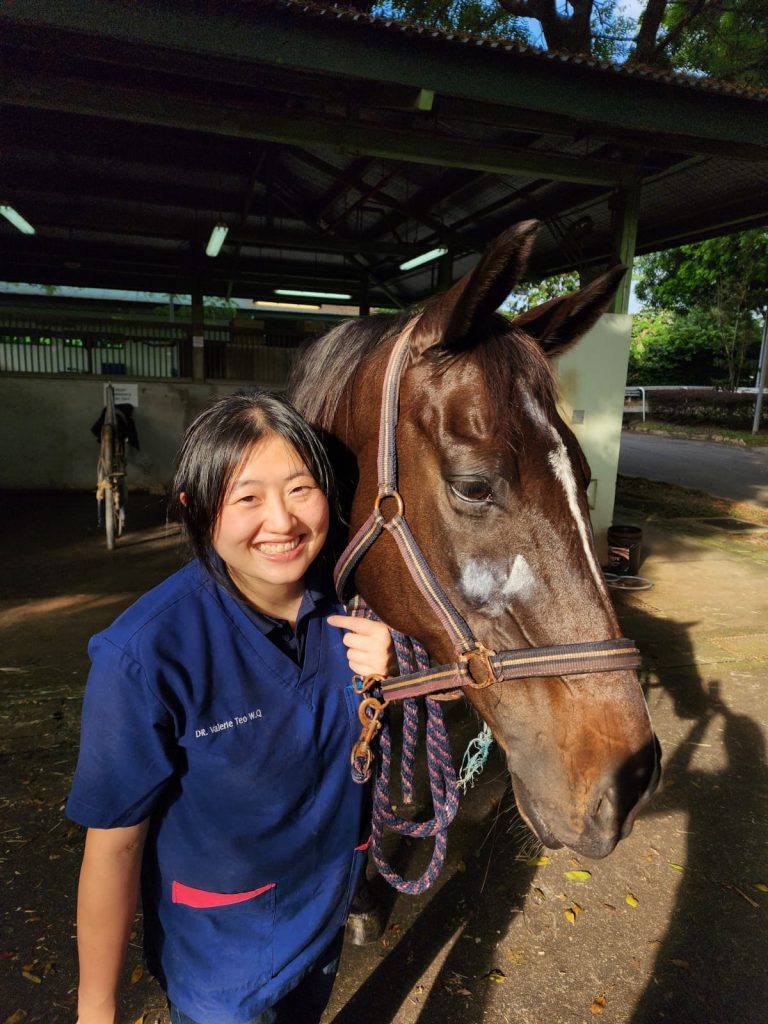
The Hands That Crack the Horse’s Back
A maroon cushion, its leather cover stained with dust and dirt, is dragged along the floor. “I stand on the cushion to reach the horse’s back during our treatment sessions,” Dr Teo remarks gently.
The horses differ in their greetings. Some trot in self-contained circles in their stables; others hide in a corner furthest from her.
Dr Teo’s responses are underlined by a cheerful inflection, made more evident against a backdrop of wearied grunts and groans from the stables she’s walking past. An animal handler keeps pace with Dr Teo, explaining her next patient’s ailments.
“Mainly lower back pain,” the handler remarks.
The patient is a chestnut brown horse bearing an uncanny resemblance to BoJack Horseman. It’s carefully led from its stable and into a dedicated treatment area, ready for treatment. Its wistful gaze is fixed on an open grass path straight ahead, where other horses are roaming about under careful supervision.
Standing on top of the leather cushion, her hands move across the length of the horse’s back. The horse stands motionless. Like metal detectors on a deserted beach, Dr Teo’s trained hands hover across the length of the horse’s body in search of the cause of its lower back pain.
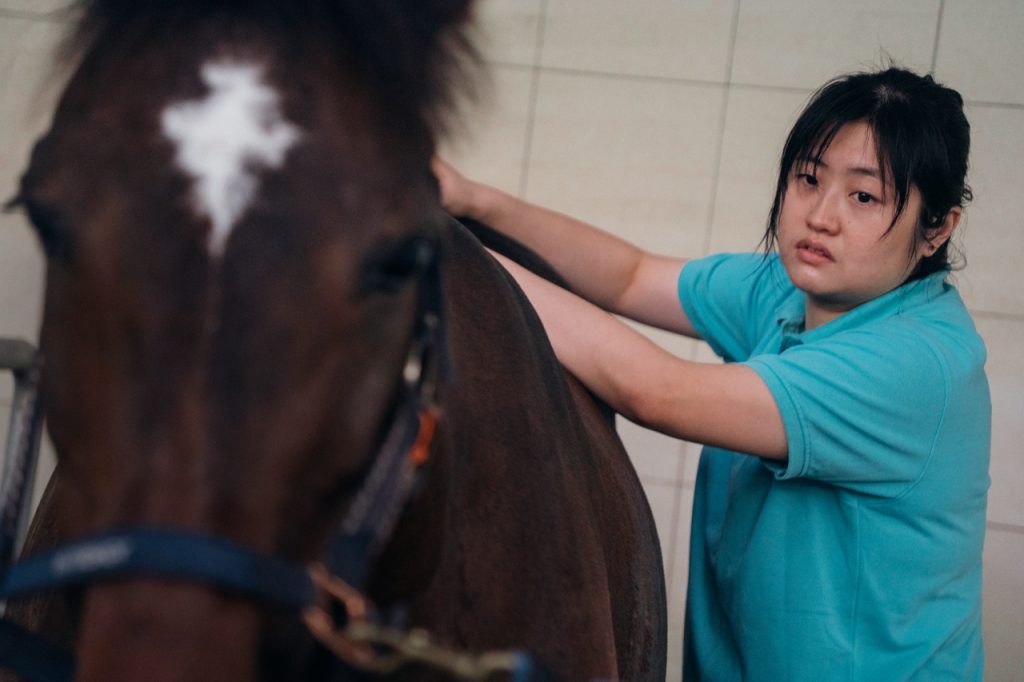
Dr Teo’s hands, like honing signals, pause their search and hover over an area of the horse’s back barely a few minutes into the treatment. To the untrained eye, the whole process bears an uncomfortable similarity to psychic healing.
According to Dr Teo, however, chiropractors observe different factors to determine whether the animal’s spine is misaligned. “We look at their gait and how they stand. We’re also trained to feel for spin motion by finding areas that have restricted or decreased motions.”
A range of techniques are employed to feel for spine motion—Dr Teo employs “manual chiropractic techniques with a mix of muscle release techniques.”
Palms atop each other, she applies force to the problem area. It almost looks like she’s performing CPR on the horse’s lower back. The expected symphony of crackling bone and popping joints is… inaudible.
“Adjusting humans and animals is somewhat similar. Humans are generally more complex to treat because we stand on two feet compared to four. Animals are four-legged and their gravity is more evenly distributed. The orientation of the spine is also different so there’s a difference in angle when treating.”
“Animal chiropractic treatment barely makes a sound because of the more even gravity distribution,” Dr Teo explains in between pants. Chiropractic treatment is hard work. The horse, however, remains unperturbed and indifferent to the treatment.
Dr Teo stays focused as she endeavours to find the next problem area along the horse’s body.
“I’m happy that I can help the horses get better. When the horses are in good physical condition, they also help to provide a better riding experience.”
The horses at RDA, a majority of which spent their heyday racing along the muddy tracks at Singapore Turf Club, now have new careers as therapy animals. Equine therapy—therapeutic horseback riding for children with special needs—improves balance, posture, strength, and emotional control.
According to her, her pro-bono treatment sessions at RDA sit neatly at the intersection behind why she furthered her studies to become an animal chiropractor.
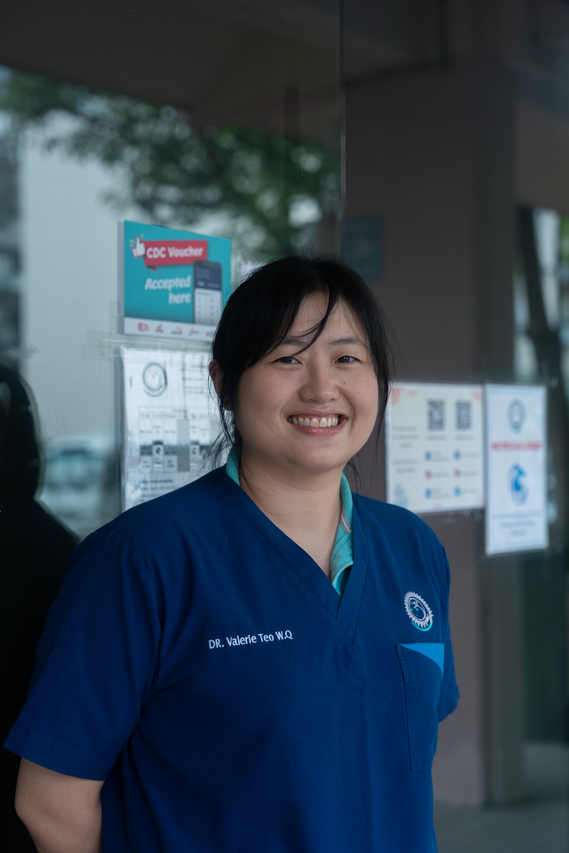
She hops off the leather cushion and lands with a muted thud. The horse, which has now warmed up to Dr Teo, is shaking itself off. Dr Teo calmly approaches the horse’s hind leg—any sudden movements could result in a scare. And a direct kick from the hind legs of a horse could kill.
Dr Teo first had dreams of being a vet because of her love for animals until she realised that blood made her squirmish. After much deliberation, she decided to be a chiropractor instead, putting her dreams of working with animals on hold. However, it was a serendipitous encounter with her human patient’s dog that rekindled those dreams.
“My patient’s dog was in a lot of pain. The patient asked me whether I could treat the dog. I was honest with them and told them I didn’t know anything about animal chiropractic treatment but they told me they trusted me,” she remarks.
“It was that patient that inspired me to move overseas to educate myself on animal chiropractic.”
Today, Dr Teo is now a certified animal chiropractor from Option for Animals, an animal chiropractic college based in the US.
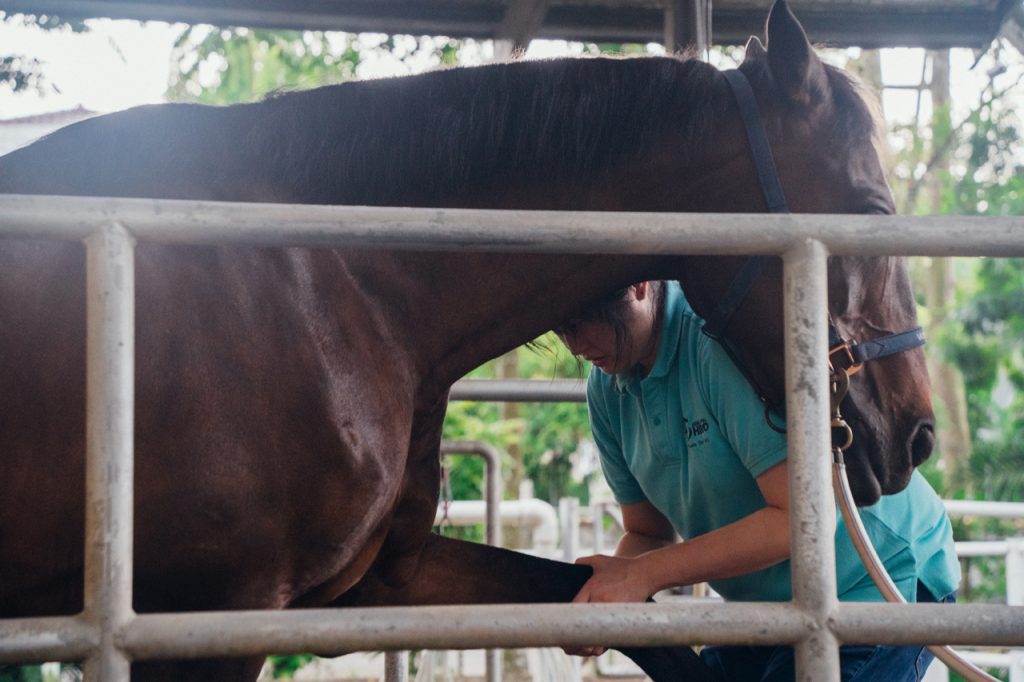
Bones Laid Bare
Even with Dr Teo’s slate of credentials, chiropractors in Singapore hold a less-than-stellar reputation. After all, their profession invites a mixed bag of responses. Medical professionals and scientists warn everyday folk about the potential risks of chiropractic treatment.
As reported by the New York Times, neck manipulation in humans risks severe complications. Manipulating the neck at such a high velocity, for instance, could damage arteries, change blood flow in the brain, and increase the risk of a stroke.
Let alone that of animals who can’t voice their preferences about treatment.
When asked how she feels about what others think of her profession, Dr Teo takes a cautious tone. “Everyone has their view about different aspects of any industry. I feel that the best way to change people’s mindsets about us is to start from ourselves.”
“I think it’s because I notice that when it comes to animals, people tend to make different claims. A lot of people can claim that they treat animals but you need to be qualified to do it. Singaporeans may not know about chiropractic treatment for humans, let alone for animals.”
The horse is coaxed back into its stable with the promise of food. The treatment session comes to an end. The wheels of a large plastic receptacle, containing bales of hay, are rolled out to loud grunts. Handlers stop by each stable, filling each stable with hay.
Dr Teo looks on as the horses are fed, happy with a satisfied patient.
“The most fulfilling part of my job is to help the animals,” Dr Teo remarks as she looks on, “Animals cannot talk so I’m very grateful that my job helps me to be a voice for these animals. When the animals are happier, we also help the owners as well. They are happier too.”
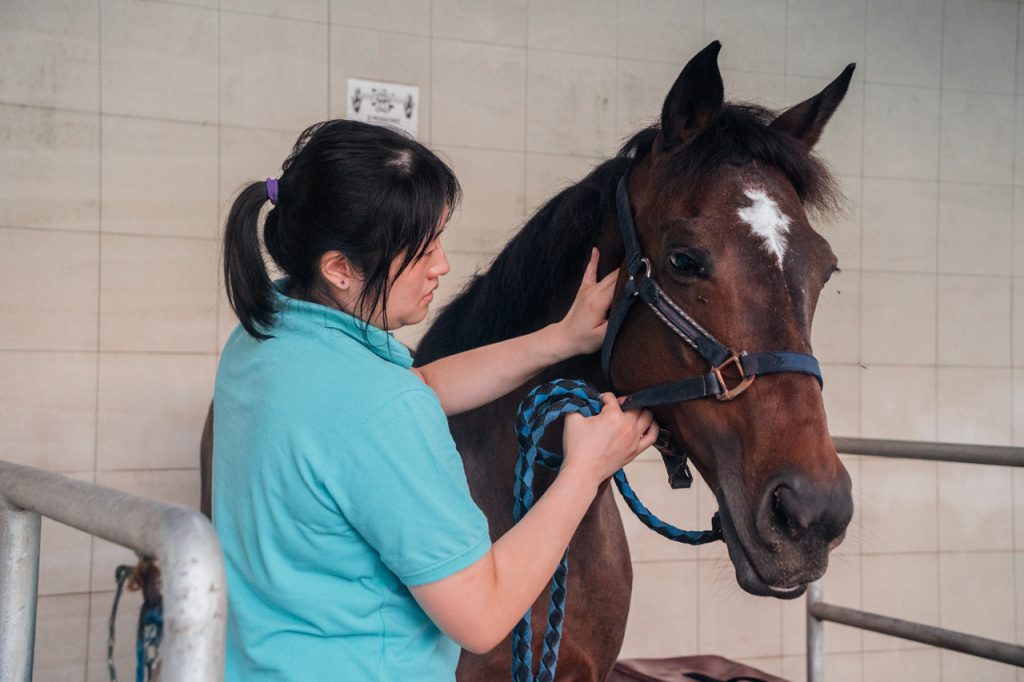
Animal Chiropractor: Allied Health Professional or Quack Doctor?
Horses are but only one species of the animals she treats. Dr Teo has performed treatment on animals as small as a hamster to as large as an elephant.
“My best friend lives in Thailand. I visited her when the borders just opened. She told me that the elephants in Thailand are suffering. We stopped along a street when we saw an elephant.”
“I was feeling the elephant and realised that the elephant was in pain. I treated the elephant and during the treatment, the elephant was crying because it was in so much pain. Its leg was chained. After the treatment, it gave me a bow. It was so cute.”
Aside from random elephants alongside the streets of Thailand, her Singaporean customers seem satisfied. Tears may or may not have been involved.
According to a Google Review of Animal Pal Chiropractic by Emmanuel Png, it was Dr Teo who was a huge factor in his pet’s recovery. “I brought my pet in last year because she was having difficulty walking. Today, she can run alongside me.”
Another review by Ashley Lew reads: “Our dog Tiger has twice been adjusted by Dr Valerie Teo. Tiger is an active dog that runs twice a day so it was vital he get a chiropractic check to keep his spine aligned and nervous system firing for good coordination.”
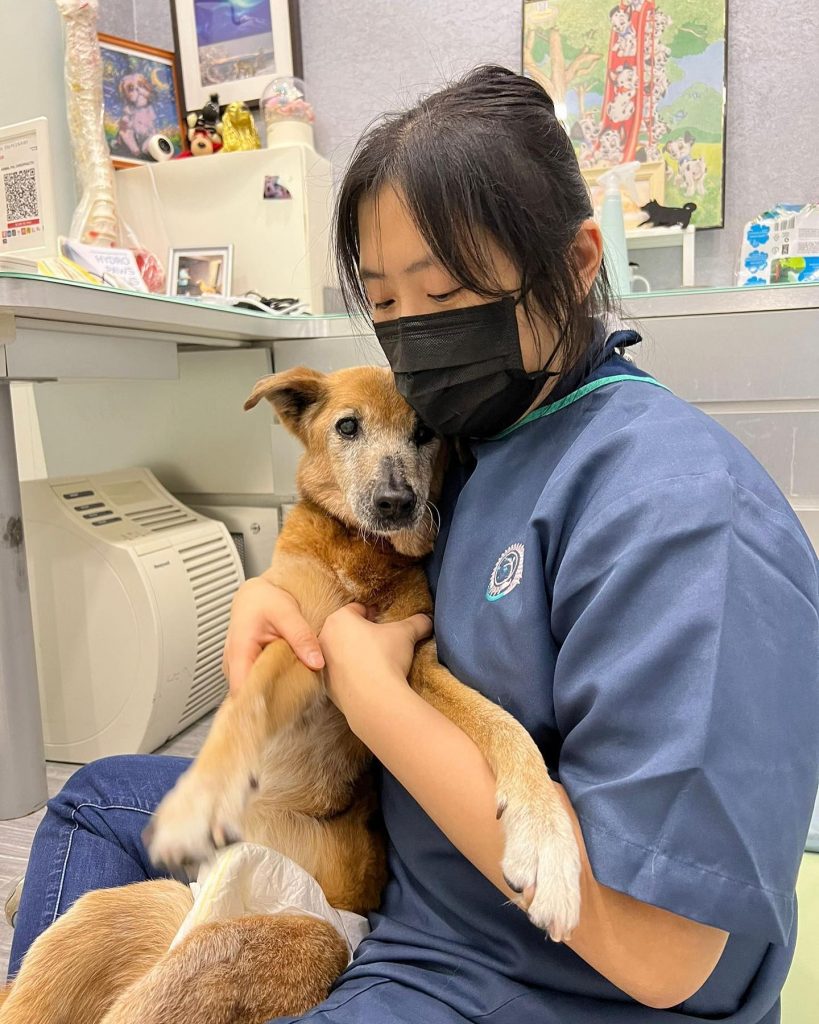
That said, seeing an unregulated animal chiropractor, like some of the ones on TikTok, can lead to serious injuries in your animals. Scientists also warn that there is no evidence that moving an animal’s spine around improves health.
Ultimately, it is still the pet owners’ prerogative to even consider animal chiropractic treatment as an option if the need arises. Dr Teo, however, feels that it’s a shame that the history and controversy surrounding the chiropractic field means that the treatment is not given fair consideration.
While her friends and family have expressed support for her career path, the wider public is wary of chiropractic treatment. These perceptions are, however, understandable. Especially when the origins of the profession are marred with a tale that seems similar to pseudoscience.
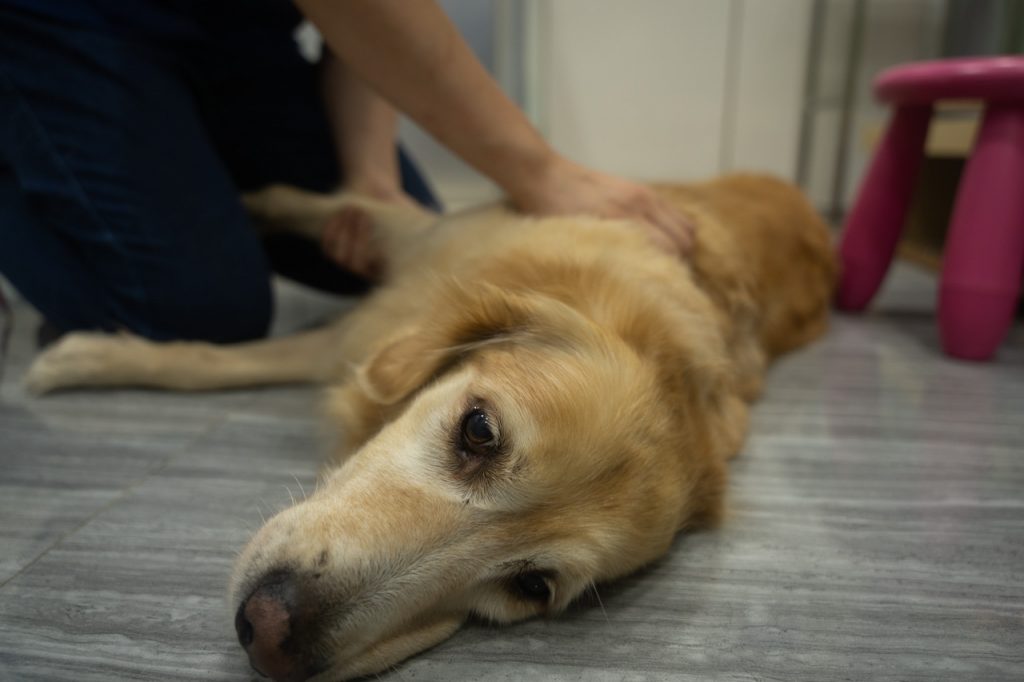
Falling Through The Cracks
Despite years of study to become a chiropractor, the field’s controversial reputation precedes itself in some countries more than others.
In Singapore, chiropractors are encouraged to self-regulate through their professional associations—one of them being The Chiropractic Association (Singapore), an association Dr Teo was once president of.
The lack of regulation in Singapore means that unqualified individuals can call themselves chiropractors and charge exorbitant prices for package sessions that may not work. The absence of regulation also applies to animal chiropractors. The same unscrupulous methods, sold to your pets, place animal welfare at risk.
“In every industry, there are people that do unethical things. That’s why we need regulation around the chiropractic industry.”
Dr Teo’s adopts a more serious tone. In between breaks, she recounts her push to regulate the chiropractic field in Singapore. “We brought up a code of ethics with the Ministry of Health last year so that we can really be there to protect the public, as well as the profession as a whole.”
“The worst thing that can happen is that an unregulated chiropractor is still allowed to treat patients. It is important to have regulation and a code of ethics.”
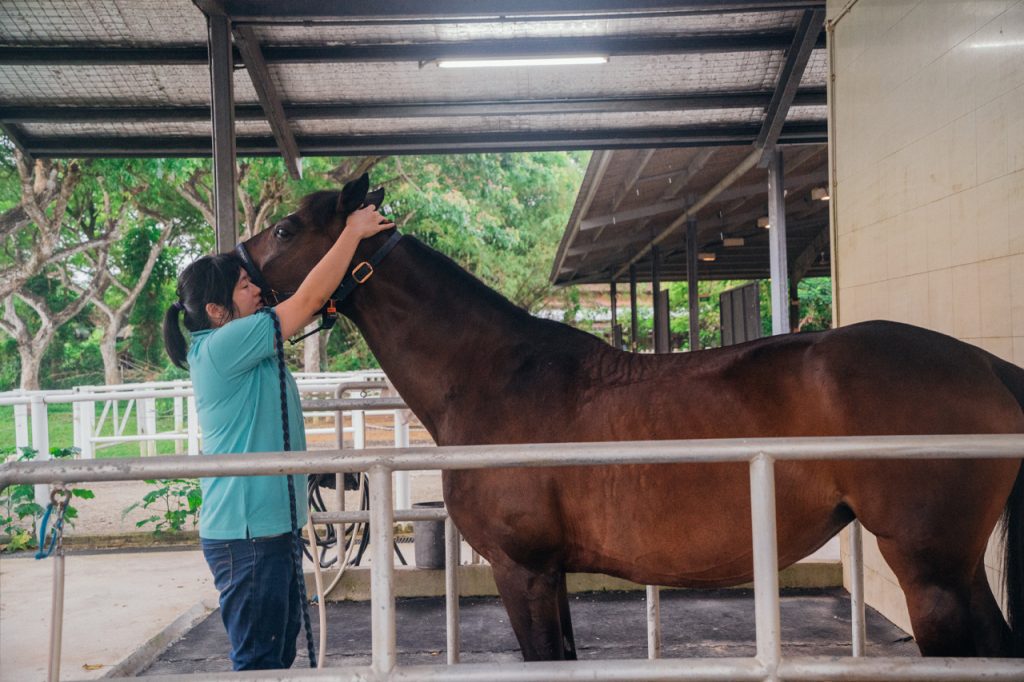
More Than Just a Job
Dr Teo is adamant that Singapore needs to regulate the chiropractic field, regardless of whether humans or animals are involved. After all, the perception around the chiropractic field is a chicken and egg problem.
“I know there’s some controversy regarding the chiropractic field. But I think the best thing we can do is start with us. I want to make a change and help people and hope I can set an example for other chiropractors in Singapore to follow.”
Although the chiropractic field remains shrouded under a veil of controversy, Dr Teo’s bubbly nature stands unwavering. “I see myself doing this for a long time. It’s really fun; it doesn’t feel like work. You play with one dog, then you play with a different breed of dog and different animals.”
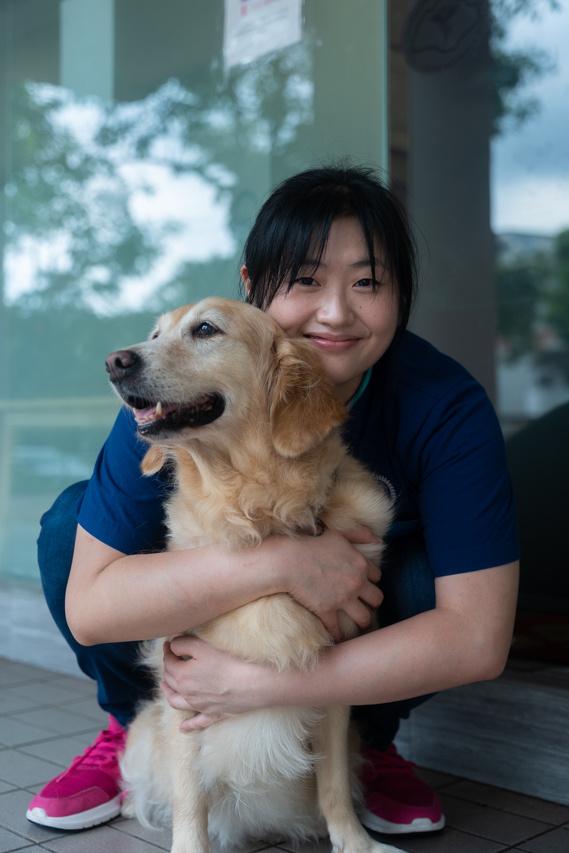
She hopes that, at the very least, Singaporeans will see chiropractic treatment as part of a holistic treatment plan. Well, chiropractic treatment received from regulated and qualified chiropractors that is.
“My definition of success is to be true to yourself,” Dr Teo answers when asked how she stays motivated despite the (back) pains of public misconception.
“There will be challenges but as you try your best and really be present in the moment. That’s the key to success.”
Now, Dr Teo has something more immediate to attend to. Her boots now echo off the hot tar as midday approaches. She walks away from the stables and into her car. In the next few hours, she will exchange cowboy boots for scrubs.
She has a clinic to run. This time, for human patients.






